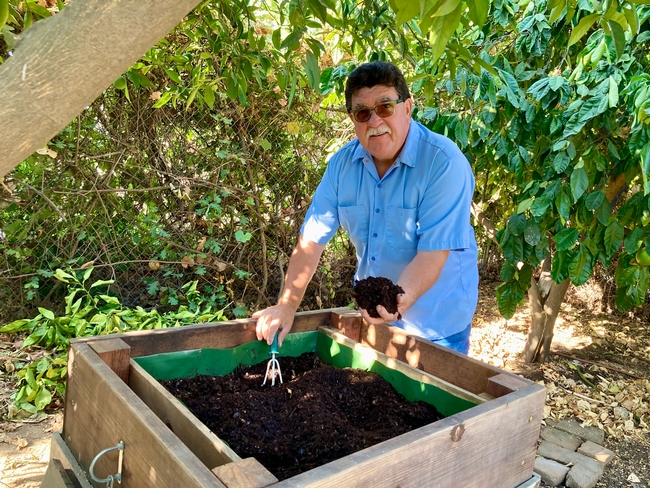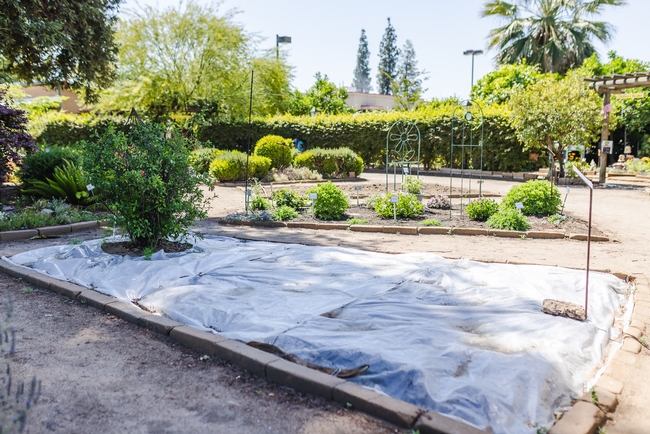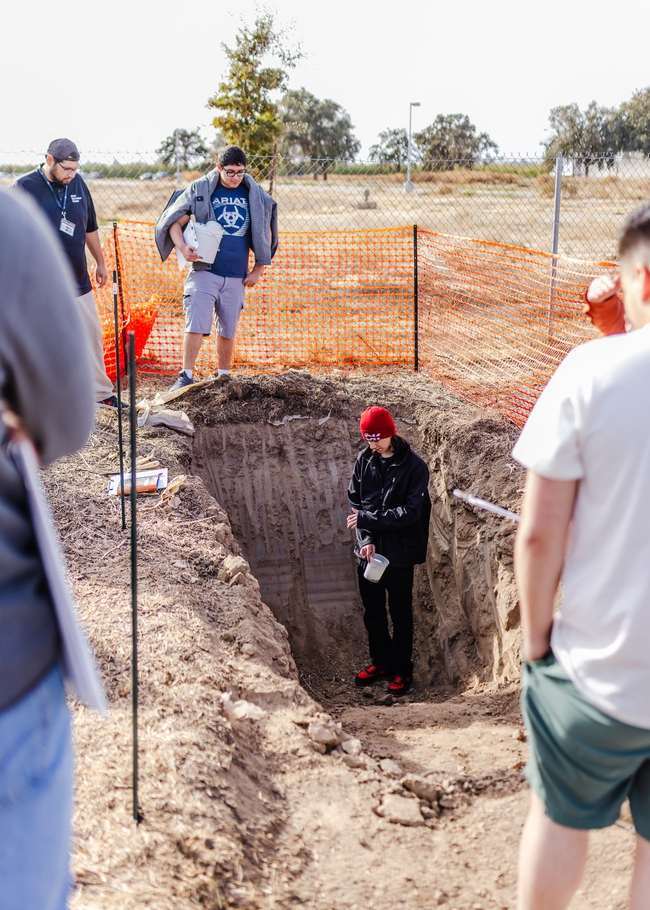- Author: Jeannette Warnert
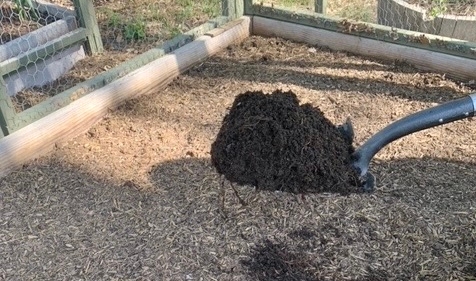
As a start, spread organic mulch on the top of soil to boost its quality over time. As the mulch breaks down, soilborne organisms slowly churn it back into the soil and eventually move it through the soil profile. Spread leaves, pine needles, small trimmings, grass clippings, wood chips or straw two- to four-inches deep on the surface and let the soil microorganisms do the work. The addition of water in the summer will help the mulch break down.
Step up your soil building game by adding plenty of compost. This is the technique UC Master Gardener Randy Thomson recommends in his Madera and Fresno county classes. Thomson joined the MG program in 2011 when he lived in Los Angeles County. Three years later he became a Master Composter in Orange County. In 2018 he moved to Madera County and localized his teaching on traditional and worm composting.
“In urban areas, developers scrape off the topsoil and compact the dirt before building a home's foundation,” Thomson said. “How do you grow in that? We need to rebuild what was optimized for construction, garden in raised beds or grow plants in pots. In soil with organics, you can actually grow food.”
Thomson's interest in soil building began when, during his teen years, his foster mother took him to the family farm in Oregon's fertile Willamette Valley.
“I loved it. There's a logic to living with agriculture. Ag is a lot about listening and observing how to use an environment without destroying it,” he said. He has applied this concept to gardening, and prefers to “keep things simple.”
“Good soil is 50 percent air and water. Forty-five percent is sand, silt and clay. The last 5 percent is organic matter, more specifically, compost,” Thomson said.
This formula leads to a soil capable of supporting worms, bacteria, fungi, protozoa, nematodes and micro arthropods that eat each other, embody the nutrients and make them available for plants.
“Compost is all you need,” Thomson said. “If you take care of the soil, the plants will take care of themselves.”
Another benefit: with a little labor, compost is free. The inputs – plant trimmings, grass clippings, leaves and food scraps – are generated in and around the home. Follow Master Gardener composting instructions to transform them into a rich soil amendment.
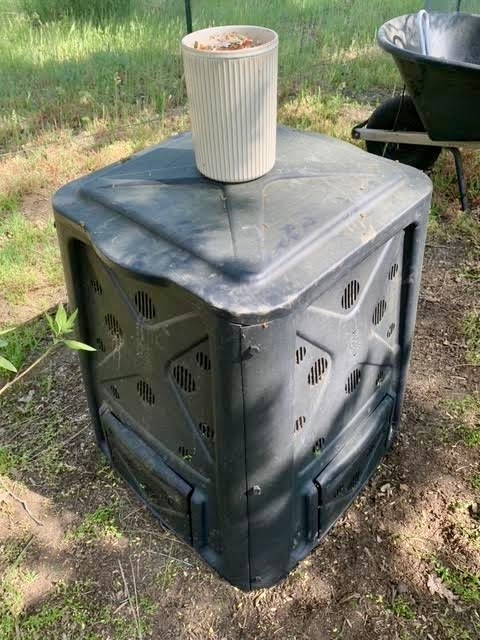 Collect food scraps. |
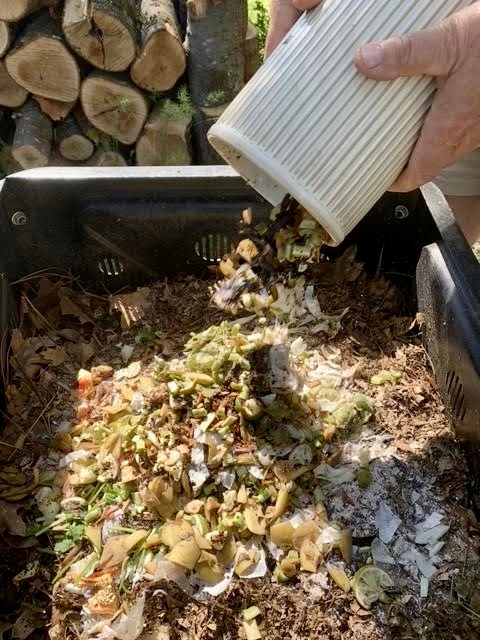 Add food to the top of bin. |
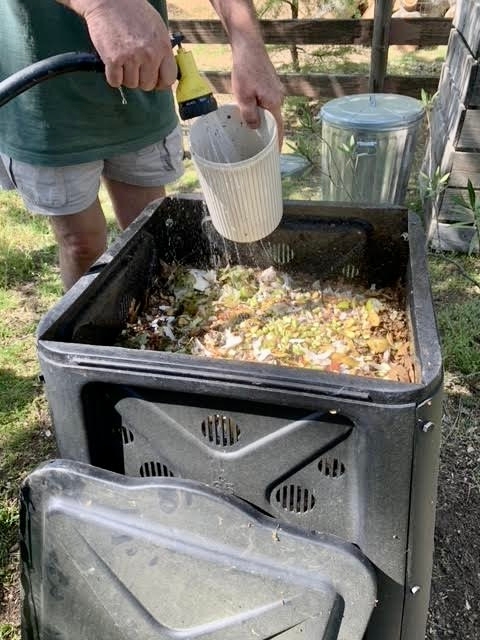 Add water. |
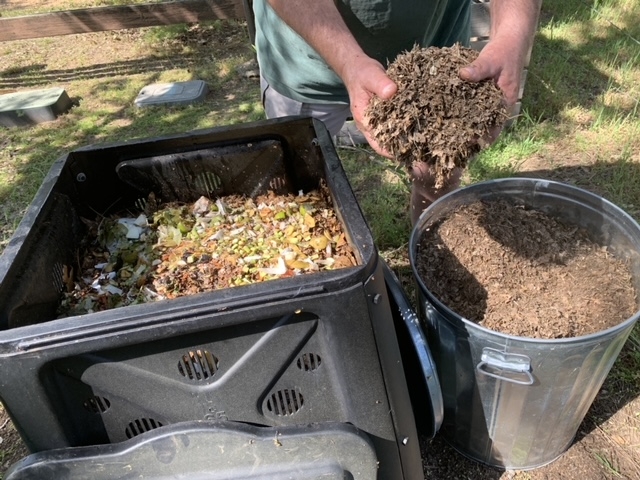 Add shredded dry leaves. |
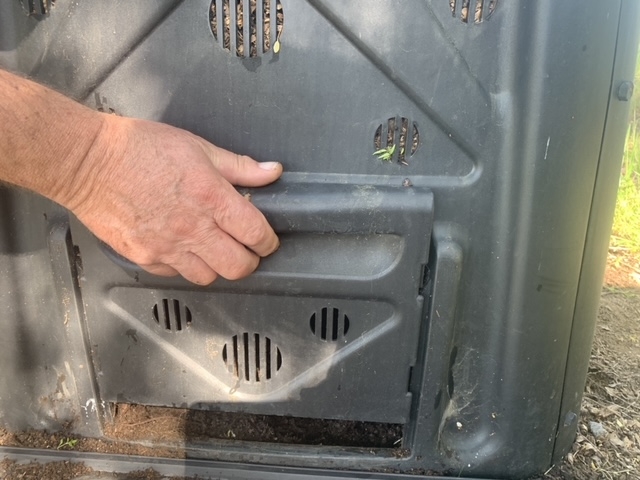 Over time, contents compost. |
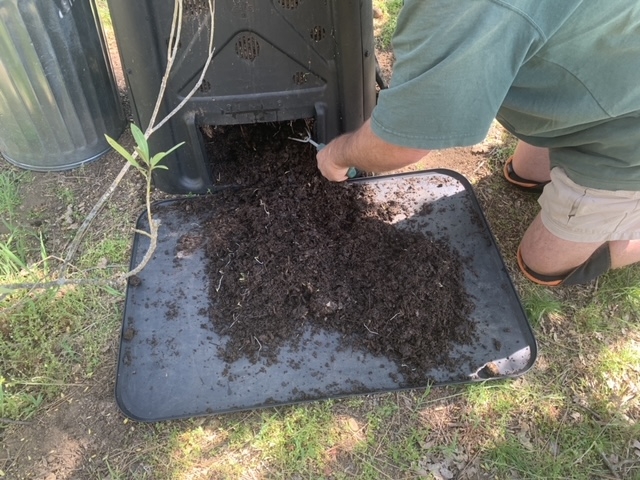 Harvest from the bottom. |
|
The cold composting method doesn't require gardeners to regularly turn the pile, which can be labor intensive. |
||
Another Master Gardener, Tony Carrasco of Fresno County, uses compost, and has gardened successfully with the use of other organic fertilizers, such as steer manure, bone meal, blood meal, fish emulsion and worm castings.
“I use soil amendments because I saw it was working for farmers in the field,” he said. “I was always planting and experimenting. I noticed that this stuff works.”
When Carrasco was a child, he and his siblings worked in orchards, packing houses and fields when school was out of session. At age 17, he got a job installing air conditioning. “That's when I said, ‘No more field work for me.'” But he never lost his fascination with growing things.
After retirement, Carrasco became a Master Gardener. He is one of three managers at the program's demonstration garden, Garden of the Sun. He adopted several garden plots at the MG garden and at the community garden in Kingsburg, plus he gardens at home.
“Twice a year I till in compost, horse and cow manures and organics I buy in bulk at a nursery near Sacramento,” he said. “I don't have a formula. I've gotten to where my vegetables come out pretty good.”
Carrasco experiments with worm composting and introducing fungi to break down organic materials in the soil. He said he has also tried bokashi composting, a Japanese composting method that ferments food waste in an anaerobic environment with effective microorganisms and bokashi bran. (Learn more from Bokashi Fermentation by Dr. Michael Vincent Rodriguez, UC Merced on YouTube.)
Carrasco's gardens produce a bounty of beautiful produce, much more than his family can use. He donates the excess to friends, neighbors and the Kingsburg Senior Center.
“Of course, there is a cost. But for me, the return is the joy of gardening. It's a joy to share,” he said.
For more information about composting, download a two-page brochure in a printable pdf format here.
- Author: Jeannette Warnert
The summer months in Fresno County are ideal for garden soil solarization, an environmentally sound way to kill weeds, insect pests and soil pathogens with free and naturally abundant solar energy. No pesticides are used in the process.
The greenhouse effect of the sun's rays on clear plastic can heat up the top 12 to 18 inches of the soil to as high as 145 degrees under perfect conditions. Excellent pest control can be achieved by maintaining the soil at 110 to 125 degrees in the top 6 inches, according to the UC Integrated Pest Management Program. The hot soil environment will kill such pests as nematodes, grubs, cutworms, beetles and snail eggs. Disease pathogens, such as fungi that cause verticillium and fusarium wilt, die.
There are downsides. Solarization requires taking garden space out of production during the growing season for 4 to 6 weeks, but future garden success is likely worth the sacrifice. The process may also kill some beneficial soil organisms, though UC IPM reports that many beneficials survive solarization or quickly recolonize the soil afterward. Earthworms, often present in healthy soil, burrow deeper to escape the heat and return when the treatment ends.
To solarize soil, smooth an area and water uniformly to 12 inches deep, then cover it with clear plastic. Rolls of clear plastic “drop cloth” are available in the paint sections of large home stores and online. Thin plastic (1 millimeter) provides greater heating but is susceptible to tearing; slightly thicker plastic (1.5 to 2 millimeters) is better for windy areas. Secure the plastic tightly over the soil with shovelfuls of soil, lumber, rocks, landscape staples or anything that will keep the breeze from catching the edges. Leave the area undisturbed for 4 to 6 weeks or longer in cooler temperatures or if the area is shaded part of the day.
After solarization, the bed can be planted immediately with seeds or transplants.
Fresno County Master Gardener Emily LaRue is solarizing a garden bed at the program's demonstration garden, 1750 N. Winery Ave., Fresno. The Garden of the Sun is open to public visitors from 9 to 11 a.m. Mondays, Wednesdays and Fridays.
For more information on soil solarization, see the UC IPM Pest Note: Soil Solarization for Gardens & Landscapes.
- Author: Jeannette Warnert
Dec. 4 - 8 is Healthy Soils Week in California. Learn more by following the hashtag #healthysoilsweek2023 and visiting the CDFA Healthy Soils Week webpage.
Soil and plant science students at Madera Community College are learning about the local soil profile by climbing into a five-foot-deep soil pit at the UC Master Gardeners' Three Sisters Garden.
The students are in an agricultural lab course taught by Dr. Elizabeth Mosqueda, who knew the best way to understand the different layers of soil is to personally see, feel and collect soil samples at different depths.
Mosqueda starts her soils class with a PowerPoint presentation and a video to introduce the students to the physical properties of soil – color, texture, structure, porosity and other characteristics. Using the USDA online soil survey tool, the students learn that the soil series is Hanford fine sandy loam and the horizon contains three other soil layers beneath it. Then the learning comes to life when the students arrive at the soil pit with trowels, sharp scraping tools and containers.
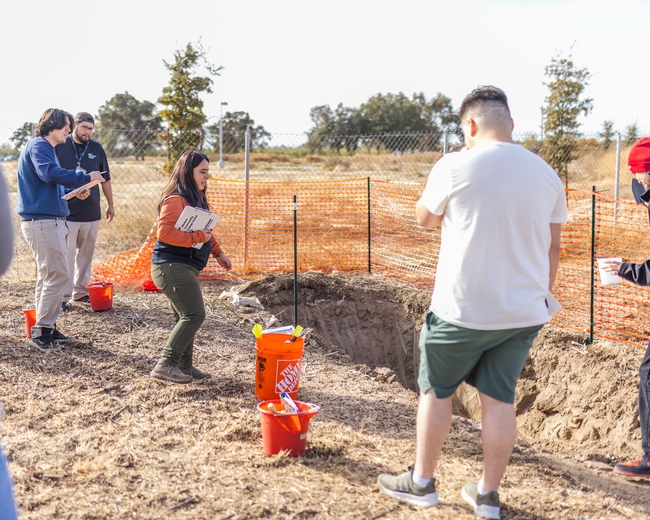
“In our case, you can't tell the different soils just by looking at it, but by wetting samples and then assessing it with your hands, you can determine the properties of the different layers,” Mosqueda told the students.
Mosqueda wasn't able to get permission to dig the pit elsewhere on campus, but the Three Sisters Garden, a two-acre area on the north side of the school set aside in 2008 for community and student learning, was open to the idea.
With financial support from a dean, the professor worked with lab coordinator Lukas Griffen, who operated a backhoe to carve out the soil pit. The pit is protected by orange fencing when not being used for education.
The Three Sisters Garden is always open to visitors interested in all aspects of gardening, such as vegetable production, flowering perennials, drought-tolerant plants and attracting wildlife. The garden also provides a peaceful respite for stressed students and faculty.
“Some visitors just want to walk around, and we also have tables and chairs for those who want to eat lunch or talk,” said Barbara Mattice, a Madera County UC Master Gardener volunteer and a garden manager.
She said the garden also supports the campus community by donating about 2,000 pounds of fresh vegetables harvested in the garden per year to the campus food pantry and by participating in campus events.
View a video of Dr. Mosqueda at the Three Sisters Garden soil pit:


